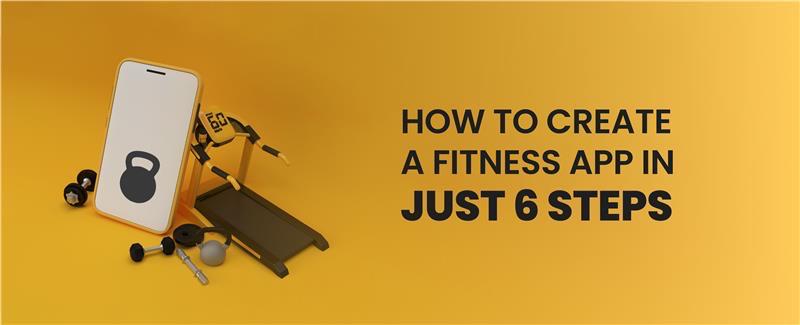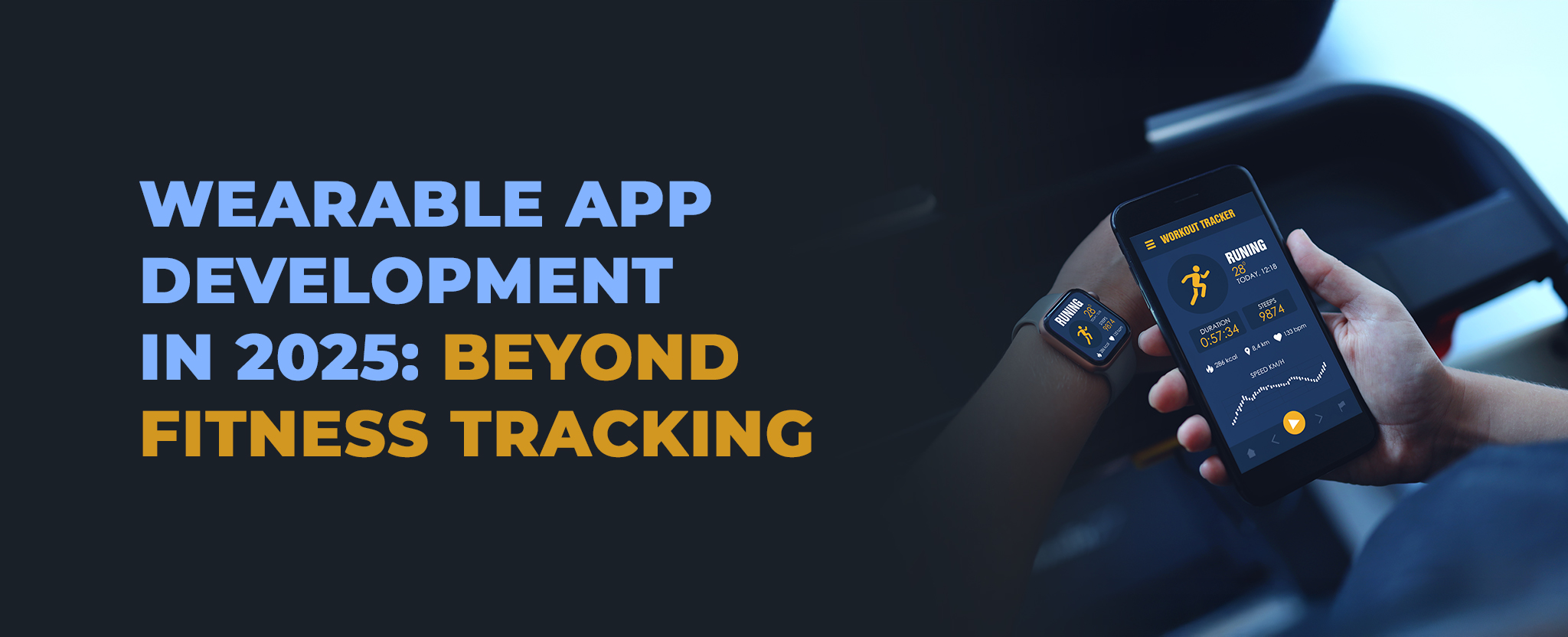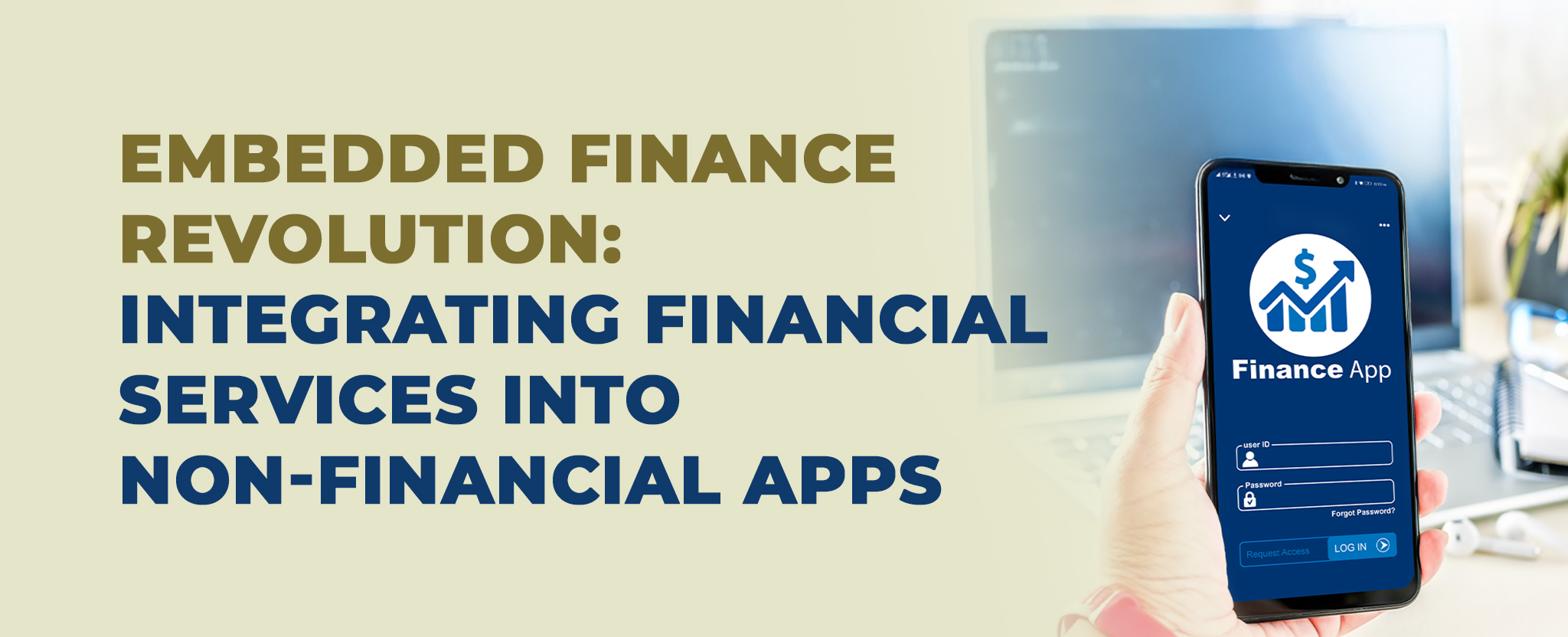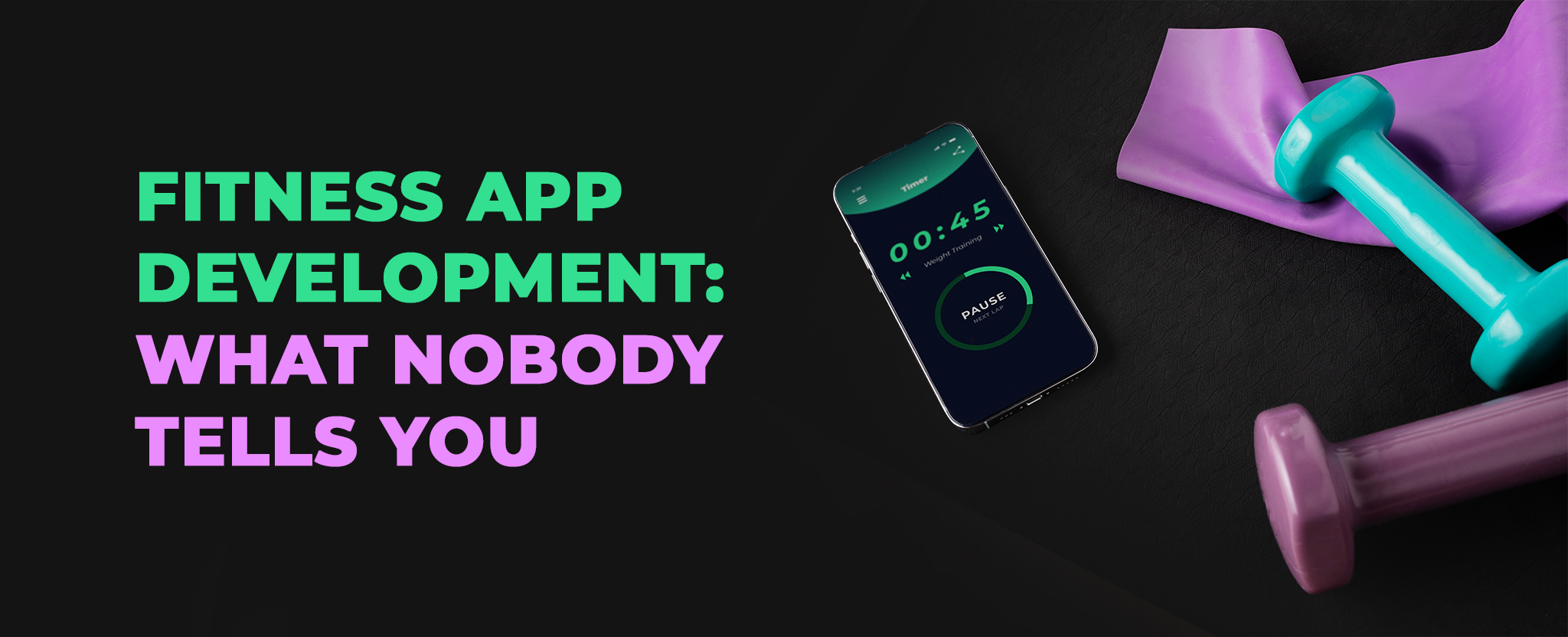How to Create a Fitness App in Just 6 Steps
14 Dec 24 


Fitness and sports apps are created to help people stay physically active, build healthy exercise routines, and they have gained huge popularity in recent years. This rise in popularity comes from people becoming more aware of their health and overall wellness. As lifestyles change and people look for more accessible ways to exercise, the fitness industry has embraced digital solutions to better serve their customers.
To understand how to make a fitness app, you need to know both basic and specific details, like the different types of apps, ways to make money, and most importantly, the steps to build it. In this article, we’ll explore various aspects of fitness app creation, including market insights, fitness app development cost, key features, and the complete process. This will help you better understand fitness app development companies when learning how to make a fitness app.
Fitness App Market Overview
The fitness app market is huge and growing rapidly. According to Statista, this market is expected to reach US$19.33 billion by 2023. With a yearly growth rate of 14.34% (CAGR 2023-2027), it should grow to US$33.04 billion by 2027.
Here are some popular fitness apps and their earnings in 2021:
- Fitbit: 111 million registered users – $1.21 billion
- MyFitnessPal: 200 million users – $171 million
- Strava: 76 million users – $167 million
- Peloton: 5.9 million users – $4.02 billion
- AllTrails: 30 million users – $3.8 million
- Sweatcoin: 120+ million users – $19.3 million
These numbers show that the fitness app business offers great opportunities. Those who enter this market with good planning have a high chance of success when learning how to make a fitness app.
Types Of Fitness Apps
Looking at these successful fitness apps, you’ll notice they fit into specific categories. When thinking about how to make a fitness app, one key question is what type you want to create. Whether you build it yourself or work with app developers, different categories serve different user needs.
Activity tracking apps
Activity tracking apps help users monitor their daily workouts and physical activities. These apps track various metrics like steps taken, walking or running speed, distance covered, and how long activities last to calculate calories burned. For serious athletes like runners and cyclists, some specialized apps offer detailed performance measurements. Popular examples include Strava, Nike Run Club, and RunKeeper.

Diet & Nutrition apps
These apps help users track their food intake and create personalized meal plans. They come with large food databases that calculate calories when users log their meals and drinks. Based on personal details like gender, age, height, and weight, these apps can suggest custom diet plans and recommend suitable exercises. Well-known apps in this category include MyFitnessPal, Waterlogged, and Lose It!
Workout apps
Workout apps are like having a personal trainer on your phone. They provide exercise routines, training schedules, and detailed workout instructions. Users can customize their experience by choosing exercise levels, workout frequency, background music, and reminder notifications. Many apps let users select specific exercises or target particular muscle groups. Popular workout apps include Sworkit, Tone It Up, and Freeletics.

Many app providers now combine features from all three categories to give users a complete fitness experience and keep them engaged longer. For example, apps like Fitbit and MyFitnessPal track activities, provide workout guidance, and monitor food intake. As developers learn better ways to create fitness apps, more apps are expected to follow this trend of offering multiple features.
How To Create A Fitness App: 6 Steps
Step 1. Research your market
The first step is to study your target fitness app market and decide what type of app to build. Before starting development, you need to identify your competitors, understand their strong and weak points, and see how they solve user problems. Use this information to analyze the market thoroughly and choose which type of app to create.
Step 2. Decide on the app’s monetization model, platform, and features
After understanding the market, choose whether to launch on iOS or Android. If most of your target users are on Android, start with a basic version (MVP) there and consider iOS later. While having your app on both platforms costs more, it helps reach more users and can be worth the investment.
Next, plan how your app will make money. You can pick from various strategies or combine different approaches that work well together.
You now understand what basic features a fitness app needs. But to stand out, do more research and test extra features based on your app’s purpose and what your users want. These additional features could be what makes users choose your app over others.
You may also explore Monetization from Android Apps: Ways to Earn Revenue
Step 3. Prototype and user testing
The best way to check if your app idea will work is to create a basic version first (MVP). This version only needs the most important features.
Next, let a group of your target users try out this basic version. Get their feedback and note what changes are needed. This early testing helps you understand how users interact with your app and helps avoid costly changes later during development.
Step 4. Choose your tech stack
Once your solution gets approved, you need to pick the right technology for your workout app. This choice affects how much your fitness app development will cost. It also determines what your app can and cannot do.
Here are the main technology options for building a fitness app:
- Native app: These apps are built using Swift (for iOS) or Java/Kotlin (for Android). Since these programming languages are made for specific platforms, the apps can use all device features and work very smoothly.
- Cross-platform: While native apps work great, they take longer to build and cost more. If you want your app to work on multiple platforms at once, you can use tools like React Native, Flutter, or Kotlin Multiplatform.
- Progressive web app (PWA): This is a special type of web app that works on any device, both as a website and mobile app. It’s a good choice if you want to start small and don’t need to connect to device hardware.
- No-code/low code: Some tools let you create fitness apps without knowing how to code. However, apps made this way have limited features and might not give users the best experience.
Step 5. Develop, test and repeat
During this step, developers build the app according to the approved plans. This includes creating both the frontend (what users see and interact with) and backend (how data is processed, stored, and kept secure).
A big part of development time goes into testing and fixing problems. Quality assurance teams check the entire user experience, make sure features work correctly, and look for any bugs in the code.
You may also explore A Complete Guide to Healthcare App Development
Step 6. Launch and maintain your app
When you reach the final stage, your custom fitness app is ready to be published on app marketplaces.
However, your job isn’t done after launch. You need to watch how your app performs and fix any problems that come up during use. You can track your app’s performance using tools like Google Analytics and Mixpanel to spot and solve issues quickly.

To make your app successful and profitable, you also need good marketing and customer support. Share your app on different platforms, keep your training materials current, and pay attention to what users say about your app.
Essential Features In A Fitness App
Every fitness app has its own purpose and helps users in different ways. But there are some basic features that every good workout app should have to make it easy and helpful for users.
- Sign up/Log in: Users should be able to make their own account and sign in using their app details or other accounts like email and Facebook.
- User profile: Once users have an account, they enter their health details and fitness goals. This helps the app suggest the right fitness plan for them. The more information users share, the better advice they get.
- Third-Party Device Connectivity: Today’s fitness apps need to work with more than just phones. With devices like the Apple Watch becoming popular, apps must connect with other smart wearables. These third-party devices are now a must-have feature for workout apps. Wearable fitness technology helps apps collect user information and stay connected with users.
- Blog or diaries: This feature can be used as a food diary (for tracking meals) or a blog (for sharing workout tips and health advice). People who use fitness apps usually care about their health and lifestyle. A blog helps you share useful information with users, build your brand, and keep users coming back.
- Social media sharing: Adding social media features to your app is smart for many reasons. When users share their progress with friends and family, they feel more motivated and inspire others to get healthy. This also helps you get new users through word-of-mouth.
- App integration: Since phones like iPhones and Samsung devices have their own health app, your app should work well with these built-in apps to share data easily.
- Notifications & reminders: If you want users to keep using your app regularly, this feature is crucial. Sending them reminders (for workouts, entering data, etc.) encourages them to open and use your app more often.
To make your app better than others and give users a great experience, think about adding these extra features.
- Heart rate tools integration
- Motivational goal tree
- Game elements
- App community
- Competition or practice-together mode
Monetization Strategies For Fitness Apps
Looking at the numbers, the fitness app market shows great promise, with many apps making good money in recent years. If you want similar success, you need to know how to create a fitness app that brings in revenue.
- Subscription: Users need to pay to use your fitness app’s features. One good way is to offer a free trial period. If users find your app helpful, they’re likely to pay or subscribe to keep using it.
- In-app purchases: Give users basic features for free, but charge for advanced options. This could include extra workout programs or talks with fitness experts.
- Advertisements: You can make money by putting ads in your fitness app. But be careful about how many ads you show, where you put them, and how long they run so users don’t get frustrated.
- Fees: Another way is to work with online fitness coaches through your app. When users sign up for training programs on your platform, you can charge a fee.
How Much Does It Cost To Build A Fitness App?
The cost changes based on many things, like what platforms you want to use, what technology you need, how complex your app is, and where your development team is located.
Your app development team figures out how many hours they’ll need to work, which helps set the total fitness app development cost. Usually, it takes 4-6 months to build a medium-complexity fitness app.
If developers charge $50 per hour, making a full-featured fitness app could cost between $60,000 and $160,000.
To get an exact price for your app, reach out to Savvycom with your app idea details.
Build Your Fitness App With A Reliable Partner
Learning about the market and understanding the basics of creating a fitness app development is your first step toward making your own mobile app.
If you want your mobile health app to succeed, working with a trusted tech partner is crucial in how to create a fitness app effectively. Fitness app development companies like Mindster don’t just handle the fitness app development part. With our experience in building healthcare apps, we can guide you and share best practices to help your app attract more users.
- Agentic AI1
- Android Development3
- Artificial Intelligence32
- Classified App3
- Custom App Development5
- Digital Transformation12
- Doctor Appointment Booking App14
- Dropshipping1
- Ecommerce Apps40
- Education Apps2
- Fintech-Apps37
- Fitness App4
- Flutter4
- Flutter Apps20
- Food Delivery App5
- Grocery App Development1
- Grocery Apps3
- Health Care10
- IoT2
- Loyalty Programs9
- Matrimony Apps1
- Microsoft1
- Mobile App Maintenance2
- Mobile Apps128
- Product Engineering6
- Progressive Web Apps1
- React Native Apps2
- Saas Application2
- Shopify9
- Software Development3
- Taxi Booking Apps7
- Truck Booking App5
- UI UX Design8
- Uncategorized6
- Web App Development1


















Comments